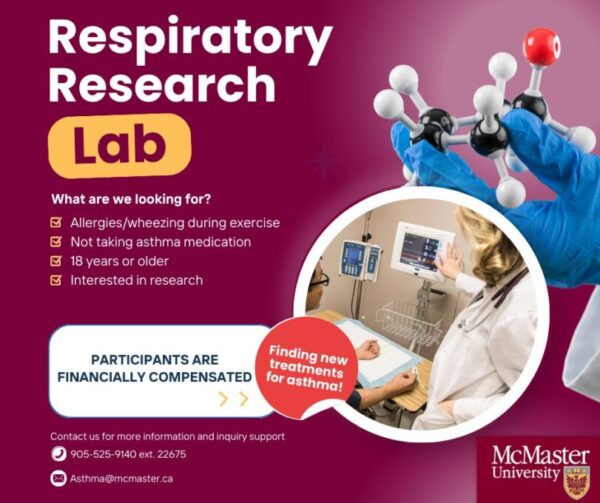Research at FIRH
Research is wide-ranging, from basic studies of animal models of lung disease (asthma, Chronic obstructive pulmonary disease, fibrosis) to clinical trials and epidemiological studies such as the Canadian Healthy Infant Longitudinal Development Study (CHILD) birth cohort study, for which the FIRH is hosting the coordinating centre. Specialized facilities have been established at the FIRH, such as the Sputum Research Laboratory and the Aerosol Research Laboratory. Scientists at the FIRH are performing studies of bone marrow progenitor cells, airway peptide challenges, electrophysiological studies of airway smooth muscle cells, chronic allergen challenges, preclinical models of lung injury and repair, and more. The research productivity of FIRH is attested to by the high quality and impact of the peer-reviewed publications.
Research on chronic lung disease at the Firestone encompasses everything from mechanistic science to clinical trials and is based on three guiding principles.
Help: Chronic lung disease can be managed, not cured. We aim to give our patients the best quality of life for as long as possible. We develop better diagnostics to tailor treatment and improve outcomes. We create rehabilitation and physiotherapy programs to reduce hospital visits and help people living with lung disease maintain health and independence as long as possible. We perform clinical trials to discover the best treatments and share those findings broadly to impact the lives of anyone living with lung disease. Our patients may have to live with lung disease, but we perform the research they need to live well.
Halt: We can slow the progression of chronic lung disease by preventing infections, optimizing treatment, and addressing tobacco/vaping addiction. Our researchers and doctors are committed to improving diagnosis, developing new treatments, providing the right treatment to the right patient at the right time, preventing infections through vaccination, and providing education and support for cessation.
Hope: We envision a future in which no one has lung disease and to do this we must understand how and when it develops, what makes it worse, and discover new treatments and drugs. Our researchers uncover mechanisms and test treatments in preclinical models then work with clinicians to bring these insights to clinical trials.
Notable achievements by FIRH scientists in the respiratory field:
- FIRH methodologies have become the international standard in the development of indirect methods to study airway inflammation by non-invasive techniques.
- Firestone scientists developed the most widely used methods of bronchial provocations using inhaled histamine, methacholine and allergens.
- The Aerochamber™ valved holding chamber for MDI aerosols, used internationally to improve delivery of inhaled medication, was developed by FIRH faculty.
- Firestone scientists developed the first Canadian guidelines for the treatment of asthma in 1989, which had a significant impact on the development of international guidelines.


